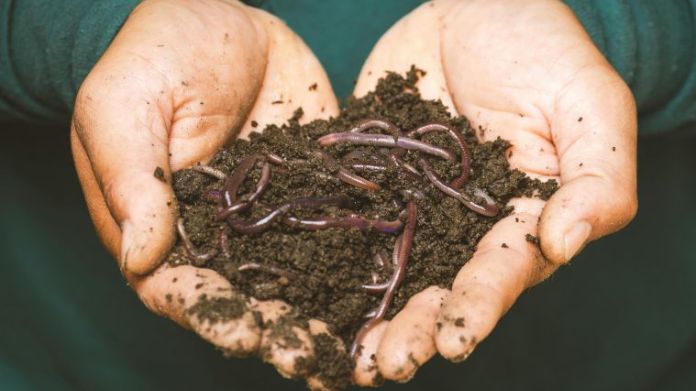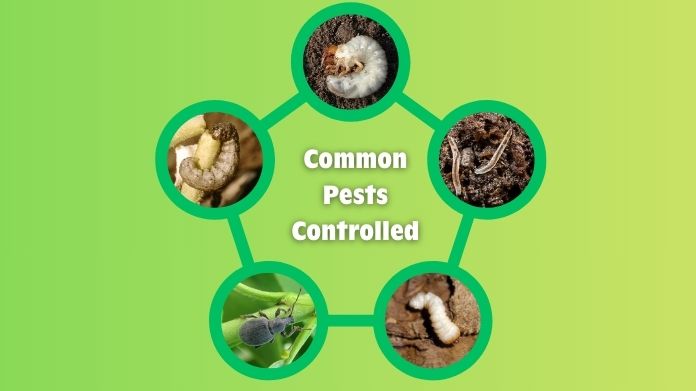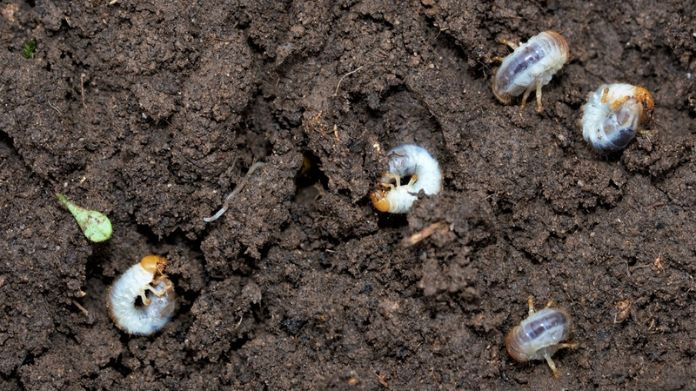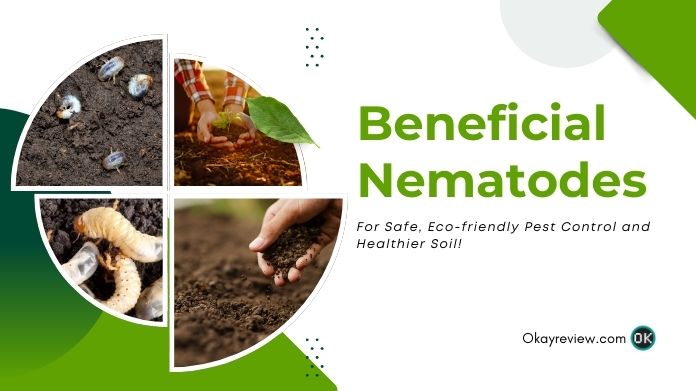Dealing with pests in the garden can cause a considerable amount of frustration, particularly when you consciously avoid using strong chemical agents.
Beneficial nematodes would fill that gap. A kind of microscopic organism that lives in the soil, nematodes are a natural and environmental method for pest control without causing harm to plants, pets, or the planet itself.
This article will deal with what beneficial nematodes really are, how they work, which pests they target, and how to apply them in your garden for a safer and more permanent result.
Table of Contents
What Are Beneficial Nematodes, Really?
 Let’s clear something up first: not all nematodes are bad. In fact, out of the thousands of species out there, only a few are harmful (like those root-knot nematodes that mess with your tomato plants).
Let’s clear something up first: not all nematodes are bad. In fact, out of the thousands of species out there, only a few are harmful (like those root-knot nematodes that mess with your tomato plants).
Beneficial nematodes, on the other hand, are the good guys. These microscopic worms live in the soil and actively hunt down garden pests like grubs, beetle larvae, and fungus gnats, all without disturbing your plants or the surrounding ecosystem.
Types of Beneficial Nematodes & Their Target Pests
Beneficial nematodes are not all the same, and it is important to pick the right one. But it does not necessarily have to be a complicated decision, since one has to consider a number of issues before deciding.
Steinernema carpocapsae
- Lives near the surface
- Best for: cutworms, armyworms, flea larvae
- Great for: lawns, garden beds, or raised boxes
Heterorhabditis bacteriophora
- Digs deeper into the soil
- Best for: white grubs, root weevils, beetle larvae
- Great for: root crops, turfgrass, and garden borders
Steinernema feltiae
- All-rounder
- Best for: fungus gnats, shore flies, and other soft-bodied larvae
- Great for: greenhouses, indoor plants, and seedlings
Common Pests Controlled by Beneficial Nematodes
 You might be surprised how many pests nematodes can take care of, including:
You might be surprised how many pests nematodes can take care of, including:
- Grubs (Japanese beetles, chafer beetles)
- Armyworms and cutworms
- Root weevils
- Flea larvae and sod webworms
- Fungus gnat larvae (common in potted plants)
- Even some wood borers
In short, if it’s living in your soil and munching on your plants, there’s probably a nematode for that.
Why Gardeners Love Beneficial Nematodes
Let me break it down:
- 100% organic, no chemicals, no toxins
- Safe for all living things (except pests!)
- Environmentally friendly and biodegradable
- Boosts soil health and supports nutrient cycling
- Targets specific pests without hurting the rest of your ecosystem
- Cost-effective and fewer reapplications over time
They are usually a combination of parasites, predators, and/or decomposing agents within the soil; as such, they can be classified as an integral part of the soil’s well-being, essentially serving as the soil’s immune system.
How to Use Beneficial Nematodes in Your Garden?

1. Choose the Right Type
Different nematode species match with specific pests, and they need to be introduced when the pests are most vulnerable in their larval stages, which are usually in the early autumn or even earlier in spring.
2. Buy Fresh & From Reputable Sellers
For live nematodes, find those that have clear refrigeration guidance. You would find a burnt oak and small range of nematodes in most gardening centers and nurseries, and internet stuff. Just ensure to confirm they have not been left idle in the cold and are unexpired.
3. Prep the Soil First
Water the area thoroughly; nematodes move best in moist soil. Avoid applying them right after using chemical pesticides, as these can harm your new allies.
4. Apply the Right Way
Mix them with water (as per the packet instructions), then apply using a watering can, hose-end sprayer, or special applicator.
Best time: Early morning or late evening, nematodes hate strong sunlight.
5. Keep the Soil Moist Afterwards
In the next 7-10 days, it is important to water your garden often to accommodate climate changes.
This might lead you to change the timing and dosage of pesticides you are applying, reflecting variance in pest levels each season.
Where to Buy Beneficial Nematodes?
Look for sellers that offer:
- Specific nematode species (matched to your pest)
- Refrigerated shipping (for viability)
- Clear expiration dates and storage instructions
Some trusted online sources include Arbico Organics, NemaSeek, and local garden stores with organic gardening supplies.
Common Myths About Beneficial Nematodes
Let’s bust a few myths:
- “They hurt plants.” Nope, they don’t even interact with plant roots.
- “They work instantly.” Not quite. Give them a few days to infect and kill pests.
- “You can see them.” Sorry, they’re microscopic! You’ll know they’re working when pest populations drop.
A Few Limitations to Keep in Mind
Like any natural method, nematodes come with a few quirks:
- Sensitive to heat, UV, and dry soil
- Won’t target above-ground pests
- May need seasonal reapplications in heavy infestations
- Must be stored properly (usually in the fridge) to stay viable
Treat them like living organisms (because they are!), and you’ll get great results.
Wrapping Words!
Beneficial nematodes are, without a doubt, worth considering to solve the problem of pests in your garden naturally, efficiently, and sustainably.
They are very easy to apply, completely safe for anything you care about, and extremely effective in keeping the bad guys under control.
So the next time you see signs of trouble in your garden soil, skip the chemicals and let these microscopic warriors do the dirty work for you.
Happy gardening! 🌿🐞

